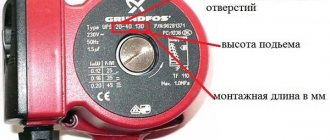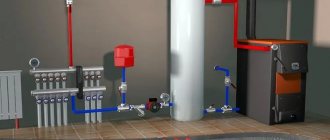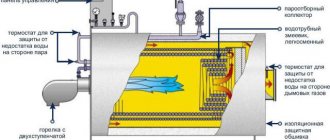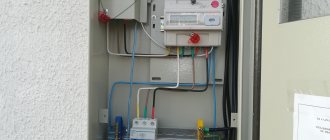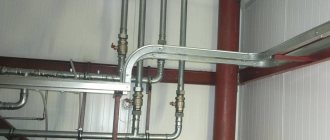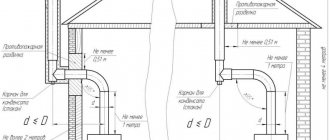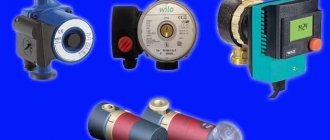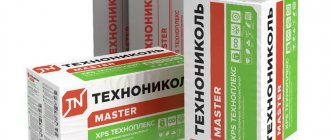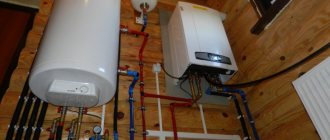It is advantageous to install an autonomous heating system from plastic materials. This is what most individual developers do. Modern pipes and fittings made of polypropylene can withstand loads well; they can be inexpensively purchased and installed yourself.
However, in order for the work to be of high quality and the communications to work properly, it is necessary to choose the right material, as well as know how to solder heating pipes and follow the safety instructions.
Pipe soldering
In order for the pipeline connections to be reliable, installation work must not be carried out at room temperatures below 5 C. All components (pipes, fittings, valves) must be free of contamination and damage. Therefore, it is important to observe safety precautions when transporting and storing the material. It is important to keep open flames away from the material. Otherwise, the pipes and fittings will become deformed and will be unusable. If it is necessary to intersect pipes, you need to use special (triple, cross) fittings. Threaded fittings are installed where there should be a threaded connection. It is unacceptable to cut threads on polypropylene pipes with your own hands. To ensure the tightness and tightness of the threaded connection, use flax tow or FUM tape.
Alternative to welding
In some cases, for example, in hard-to-reach places in the bathroom or other rooms, it is not possible to carry out welding work. The soldering process can be replaced by gluing the pipe to the fitting using an organic solvent. It has a very strong softening effect, but is also highly volatile.
After lubricating the end of the pipe and the internal cavity of the coupling, the plastic softens for a short period of time, and the connection can be made. Reverse polymerization begins after a few seconds.
However, this method is more suitable for PVC pipes that are less prone to thermoplasticity.
If for some reason this option is not suitable, for pipes NOT UNDER PRESSURE it is permissible to use a supercharged lighter instead of a soldering iron. This connection method is shown in the video tutorial below. It is important to understand: uniform soldering cannot be achieved precisely because of the alternating heating of parts, therefore the technology cannot be used for critical connections.
Materials and tools
Polypropylene pipes PN 10 are intended for cold water supply, PN 20 - for hot water with temperatures up to 80o.
PN 25 pipes, reinforced with aluminum foil and withstanding temperatures of 95 degrees, have been developed especially for heating in a private house with polypropylene.
Polypropylene pipes PN 25 have the following characteristics:
- Melting point - 150 degrees
- Maximum operating pressure - 25 atm
- Density - 0.9 g/cu. cm
- Thermal expansion coefficient - 0.15 mm/mmC
- Thermal conductivity - 0.24 W/mS
- Outer diameter - 21.2 - 77.9 mm
- Inner diameter - 13.2 - 50 mm
- Wall thickness - 4 - 13.3 mm
The advantages of polypropylene pipes for heating are:
- Resistance to corrosion and scale deposits on internal walls
- Pipes do not burst when water freezes
- Low cost
- Light weight
- Plastic
- Resistance to temperature changes
- High level of sound insulation
- Long service life - up to 50 years
Disadvantages include low melting point and exposure to ultraviolet rays.
To install polypropylene heating, you will need the following special tools:
- Soldering iron with a set of nozzles for connecting pipes
- Plastic pipe shears or roller pipe cutter
- Deburring and chamfering cutter
- Shaver for removing foil
Every home must have heating. However, summer houses are an exception. For example, frame garden houses, which are designed for relaxation during the hot season. Therefore, it is not worth installing a heating boiler, because... The summer temperature itself will warm up such a house.
If you plan to relax only in the summer, then you can build such a garden house with your own hands. Read about how to build such a wonderful building here.
How to properly secure a pipeline
At the next stage, the fragments are cut and joined on the working surface. The finished structure is installed in the selected location.
To lay good wiring, it is not enough to connect the pipes to each other - it is important to correctly install and connect them. In this case, the pipeline will not sag on the wall or deform under the influence of hot liquid
The structures are fixed using special clips. These fasteners can be single, stacked and with a clamp, or made in the form of clamps. The latter variety comes in a wide variety - because of this, it is better to make the final decision at the point of sale. Clips are intended for free movement of products along the axis, and clamps are intended for firmly fastening structures in the selected position.
Under the influence of high temperatures, the length of the pipes changes by 10-15 mm/1m. If a rigid connection is used, the connection may fail at the soldering point. To reduce the voltage, you will need to use the following compensators:
- Z-shaped models.
- Ring.
- In the shape of the letter G.
- U-shaped.
After the final stage, it remains to check the functionality of the system.
Pipe selection
Before making a selection, you should carefully analyze the specifics of the room, decide on the type of heating system, and also take into account the fact that certain skills and knowledge are required when installing this or that pipeline fittings, consider whether you can do everything yourself or will have to seek help from a specialist .
Types of polypropylene pipes: (1- with aluminum reinforcement, 2- with fiberglass reinforcement).
Manufacturers provide a wide range of products for heating installations made from various materials: metal, metal-plastic, polypropylene, each of which has its own positive and negative sides.
Today, both specialists and non-professionals recognize polypropylene pipes as the most popular and optimal option.
Metal pipeline products are the most expensive, susceptible to corrosion, which, accordingly, reduces their service life, and there are certain difficulties in assembly.
Metal-plastic pipes are well known for their low cost and easy installation process, but they are not strong and durable.
For heating and plumbing systems, the best option is polypropylene pipes, especially when doing the installation yourself. It should be noted that, depending on the purpose of use (heating, hot or cold water supply), pipeline fittings vary significantly in technical characteristics and in no case can be interchangeable.
The wide scope of use of polypropylene pipes is justified by a large number of advantages: reliability and durability (up to one hundred years of operation); corrosion resistance; resistance to chemical influence; protection from mineral deposits; easy installation and subsequent repairs.
And yet this material also has a drawback - low fire resistance.
To make a choice which polypropylene pipes are needed for the heating system, you should choose a diameter that does not affect the water pressure, but also not too wide, since then you will have to overpay unreasonably.
Disadvantages and methods for eliminating them
- The main disadvantage of polypropylene pipes is their high expansion coefficient. At a coolant temperature of 100°C, 10 meters of pipe lengthens to 15 cm. This leads to deformation of the structure. In order to prevent destruction, flexible supports are installed and compensation loops are made. Later, foil-reinforced pipes began to be used, which significantly reduced the expansion coefficient. Nowadays, the most practical pipes are reinforced with glass fiber: under the same conditions they extend by only 1 cm.
- Polypropylene products, especially connecting elements, are inferior to metal pipes in strength. It is not even correct to compare them: when subjected to strong impacts with hard objects, polypropylene is deformed and may collapse.
Heating system diagrams
Select the optimal pipe layout for self-installation of polypropylene heating. In the future, you will receive recommendations for connecting individual elements and place them in accordance with the chosen plan.
Single-pipe scheme
Single-pipe scheme
The simplest method of arranging a heating system. In accordance with this wiring method, each battery installed further from the heating unit will heat up to a lower temperature compared to the previously installed battery.
This method makes it possible to reduce the consumption of materials for the arrangement of the heating system. However, the heating efficiency will be low, because The temperature distribution with such pipe routing is uneven.
In view of this, you should try to refrain from a single-pipe pipe routing scheme.
Collector circuit
Collector circuit
To equip a heating system according to this scheme, you will have to spend more materials, however, the basic operational properties of such heating will be much higher.
Heat distribution throughout the rooms will be fairly uniform and high quality.
Two-pipe system
Two-pipe system
The most optimal method of arranging a heating system. The pipes are laid into the floor or into the walls of the house around the perimeter. Two-pipe heating is best suited for heating a home. Therefore, experts recommend giving preference to this particular pipe routing option.
Advantages of polypropylene
Pipes and connectors
- the heating system made of polypropylene is not subject to corrosion;
- more reasonable price than metal analogues;
- there are no reactions from exposure to acidic or alkaline environments;
- there is no accumulation of deposits on internal surfaces;
- there are no significant changes in coolant temperature, depending on the microclimate of the room, due to the low thermal conductivity coefficient;
- the movement of the coolant is not accompanied by noise;
- due to the property of plasticity, it is possible to make bends in the required places;
- changes in coolant temperature do not affect the design in any way;
- durability and ease of installation.
The main advantages of polypropylene pipes
If we list all the advantages of polypropylene pipes, it is worth noting their high level of quality, as well as their affordable cost. Heating systems created from these elements will serve their owners well for decades. The use of unique technologies in the manufacture of polypropylene pipes allows us to speak with complete confidence about the high strength of the products.
Polypropylene pipes do not succumb to the negative effects of corrosion during operation, and also perfectly resist mechanical influences from the outside. Dirt and impurities will not accumulate on the pipe walls. Consequently, the water will be clean and transparent for a long period of time.
As for installation, this is another advantage inherent in polypropylene pipes. Installing polypropylene heating with your own hands is not difficult.
Heating system planning
The main components of the system under consideration include the boiler, the pipes themselves, radiators (batteries) and fasteners.
Heating planning scheme for a private house.
Heating elements (or boilers) vary in fuel types and characteristics. Their installation is recommended in a specially designated area (room, outbuilding) with good ventilation and a gas sensor. The boiler must be installed below or at the level of the lowest point of the heating system, in no case higher.
It is necessary to develop a pipe installation project that includes diagrams in all rooms where the heating installation will be organized. If you are going with your own hands, you should remember that you will need additional components, such as angles and angles of rotation, couplings and various adapters. These points must be reflected in the project at each site where these parts will be used according to the plan. In addition, the diagram should indicate the installation locations of radiators and indicate the length of pipes between them.
You should take care of the fasteners for attaching the pipes. Fastening elements are selected in accordance with the type and diameter of pipes, the weight of radiators (batteries).
There are several options for constructing a heating system made of polypropylene. First of all, there are systems with top and bottom spill.
The first method involves the principle of gravity movement of water. In this case, there is no need to install a circulation pump, since the water will flow through the pipes on its own. This type of heating system is effective in cases of frequent power outages, when the use of a pump is excluded.
Bottom-spout heating systems usually involve radial wiring and the use of a pump to increase water pressure. In this case, it becomes possible to use pipes with a smaller diameter, which, accordingly, allows you to save a little.
The next classification option is a division into one- and two-pipe systems with side and bottom connections to radiators (batteries).
Expansion tank
At the peak of the accelerating manifold, the pipeline is diverted into the expansion tank. Its purpose is to regulate pressure in the heating system in order to avoid an increase to emergency pressure.
Today, expansion tanks of a closed design are more often used, eliminating contact of the coolant with air.
Structurally, the expansion tank is a container divided into two parts by a flexible membrane:
- One is filled with air under excess pressure.
- The other has a coolant inlet/outlet.
A closed expansion tank can be installed in any convenient location in the heating circuit, which is an advantage over open tanks mounted exclusively at the highest point of the system.
For your information! Free contact of the coolant with air in the open expansion tank promotes active oxygen saturation. This threatens early failure of steel pipes and heating devices due to the acceleration of corrosion processes. In this case, it is preferable to install a single-pipe heating system with polypropylene pipes - the material is resistant to deformation.
Existing types of polypropylene pipes and their characteristics
Today, manufacturers offer a wide range of polypropylene products. And before purchasing pipes, you should understand their markings and properties.
There are several categories of such products:
- PN-10 - available with an internal diameter of 16.2-90 mm, external diameter - 20-110 mm; For such pipes, thin-walled polypropylene is used (its thickness can be 1.9-10 mm), designed for operating pressure in the system up to 1 MPa and temperature up to 20 0C, therefore it is not used for heating systems.
- PN-20 - such products can have an external/internal diameter of 16-110 mm and 10.6-73.2 mm, respectively; the thickness of their walls is 1.6-18.4 mm; they are designed for operating pressures up to 2 MPa and temperatures up to 80 0C. Despite the fact that this category is considered universal, these pipes in the heating system can only be used in the return pipeline, provided that the coolant temperature does not exceed the previously specified value.
- PN-25 is the best option for heat supply, the distinctive feature of which is multi-layering (the cross-section of the pipe consists of two layers of plastic, between which a thin layer of aluminum treated with glue is laid). Manufactured reinforced products can have an internal/external diameter of 13.5-50 mm and 21.2-77.9 mm, respectively, and a wall thickness of 4.0-13.3 mm. Such polypropylene is capable of functioning in a system with a coolant temperature of up to 95 0C and operating pressure of up to 2.5 MPa.
- PN-16 - can be used for pipelines with coolant temperatures up to 80 0C, however, this variety is not common and therefore is practically not used.
There is another variety: pipes reinforced with fiberglass, which are similar in quality to products with a foil layer. However, the first type has a slightly higher coefficient of thermal expansion, but their installation is somewhat simpler (category PN-25 requires preliminary removal of the foil on the area to be welded if it is located close to the outer surface).
Figure 4 – Polypropylene pipes reinforced with fiberglass
Difficulties in repairing aluminum batteries
The structure of an aluminum heating battery.
The main problem in working with aluminum is its chemical properties. This metal is soft, but it is capable of oxidizing at the slightest exposure to the external environment. As a result of a chemical reaction with oxygen, a coating is formed, the so-called oxide film, which does not allow the surfaces of the product to be soldered together firmly enough . But this film also protects aluminum from corrosion and destruction, thereby making it a very practical industrial metal.
How to remove oxide film
Most often, fluxes are used to remove plaque. The latter are mixtures that contain inorganic and organic substances aimed at removing the oxide film, as well as protecting the metal surface from oxidation during soldering, improving the adhesion of the solder to the surface.
Flux can be made either independently or purchased in a special store. The latter may include: zinc, cadmium, bismuth. Homemade analogues are called fluxes.
Do-it-yourself installation
When installing heating from polypropylene pipes, it is initially necessary to calculate the laying diagrams. With this installation, it is necessary to maintain the slope level to the lowest point of the system, because a tap or valve for draining is installed in this place. The length of pipe sections must be calculated for each section of communication. If the pipeline is divided into sectors that can be shut off individually at any time, the operation of the communication system will become significantly safer. All tools and installation parts must be at room temperature, for which they must be brought into the room immediately before the installation process. This action is necessary to prevent the material from cracking during operation. Using a felt-tip pen, it is necessary to apply marks according to the calculations performed on the measured pipe sections.
You need to cut the polypropylene with your own hands evenly and perpendicular to the surface with special scissors or a pipe cutter, after which the cut edges of the pipe are treated with an alcohol solution, and the rest of the dirt is removed with a dry rag. A nozzle with the appropriate cross-sectional diameter is installed on the soldering apparatus, which must first be degreased, the apparatus is installed horizontally and heated to 260 °C. Pre-prepared parts (pipe and fitting) are placed in the heater holes in a horizontal position, then the time is determined from the table and the parts are heated.
http:
Then the parts are removed, the pipe is inserted into the fitting and a certain period of time is maintained for the elements to completely harden; twisting the parts during the hardening process is prohibited. This method of welding (soldering) parts is reliable and the most durable. Communication parts must be dry and clean when carrying out soldering work; if installation is carried out in a working (operating) system, then the water must be drained from the heating systems. To conduct trial tests of the heating system, you should not purchase water meters; instruments that show the deaeration of pipes are quite sufficient.
Security measures
When working with a heating device, it is necessary to observe personal protective measures:
- The soldering iron must be installed on a horizontal surface in a place free from materials.
- The technician must wear protective gloves (for working with hot tools) and comfortable overalls.
- Avoid bending over melting plastic as this process releases harmful fumes.
- The room should be relatively clean. The working surface is free from dust and debris.
- The connection between the soldering iron plug and the network must be tight and the cord must be loose.
We recommend that you familiarize yourself with: Shaped products for the transition from a round pipe to a rectangular air duct
The welding tool is preheated for 20 minutes if it does not have a corresponding indicator.
Choosing a heating source
Before you begin installing a polypropylene pipeline, you should decide on the heating source. This will affect the overall design of the heating system and the selection of additional elements.
Gas
It is considered a very economical and environmentally friendly type of fuel. However, it is appropriate to talk about efficiency only if the house is already gasified or is at least located near the main gas pipeline. Otherwise, connecting to a remote network will cost the owner a tidy sum.
The best option for installing a heating system using gas fuel is a modern wall-mounted gas boiler, equipped with a set of necessary devices and protective mechanisms that ensure maximum automation of system control processes.
Another advantage of this solution is the ability to abandon the chimney that is so common in private households. Modern gas boilers are equipped with a closed combustion chamber, the supply of oxygen and the removal of exhaust air from which is carried out through a thin tube.
Electricity
Another environmentally friendly way to heat a room, although more expensive than gas. To ensure the operation of the heating system, you will need a special boiler equipped with safety equipment, a pump for circulating coolant (depending on the chosen scheme) and an expansion tank.
Solid fuel systems
They are characterized by a higher coolant temperature at the boiler outlet, which imposes increased requirements on the organization of the safety system.
Expert advice
To ensure maximum reliability of pipeline connections, experts advise adhering to the following requirements:
- it is correct to start welding work 10 minutes from the moment the soldering iron warms up;
- perform welding or soldering operations only at above-zero ambient temperatures;
- sections of pipes connected by welding must be allowed to cool, preventing them from moving relative to each other or twisting;
- For wall thicknesses greater than 6 mm, butt welding of products is performed using a double seam. With a smaller wall thickness, the joint can be sealed with one seam;
- all structural elements fixed by soldering must be from the same manufacturer, since they may differ in the composition of the ingredients in the raw materials, which will negatively affect the quality of the weld.
Sources
- https://VashPlastik.ru/kak-pajat-plastikovye-truby/
- https://dom-i-remont.info/posts/santehnika/payka-polipropilenovyih-trub-svoimi-rukami-pravila-sovetyi-oshibki/
- https://otivent.com/pajka-polipropilenovyh-trub
- https://ProUteplenie.com/otoplenie/payka-polipropilenovyh-trub-svoimi-rukami-polnaya-instruktsiya
- https://eurosantehnik.ru/pajka-polipropilenovyx-trub.html
- https://vse-otoplenie.ru/pajka-polipropilenovoj-truby-instrukcia-polzovania-utugom-tehnologiceskaa-tablica-sekrety-raboty
- https://iseptick.ru/truby-i-fitingi/polipropilenovye-truby/kak-payat-polipropilenovye-truby.html
- https://trubametr.ru/material/pp/kak-payt
- https://vseotrube.ru/montazh-i-remont/kak-payat-plastikovye-truby
What do you think of this article?
